Sailors perform maintenance on a spotting dolly aboard the aircraft carrier USS Nimitz during security operations in the Persian Gulf, Oct. 27, 2020.
Providing up-to-date information, news and original content on American Military issues.
Sailors perform maintenance on a spotting dolly aboard the aircraft carrier USS Nimitz during security operations in the Persian Gulf, Oct. 27, 2020.
Connecticut Army National Guardsman Staff Sgt. Samantha Sheehan loads a box of groceries for a family at a drive-thru food distribution point for the Farmers to Families Program in New Haven, Conn., Oct. 27, 2020.
Medics, corpsmen, pararescuemen, doctors, nurses and other military medical personnel were honored at a ceremony yesterday.
Chairman of the Joint Chiefs of Staff Army Gen. Mark A. Milley spoke at the Armed Services YMCA's 14th annual Angels of the Battlefield Awards ceremony in Washington, D.C.

Former Army 2nd Lt. Regina Benson, a member of the Army Nurse Corps during World War II, was one of those honored at the ceremony. She's the oldest military nurse at age 100.
Benson worked countless hours in Army hospitals in the Pacific Theater from 1944 to 1946, including the Battle of Okinawa and the occupation of Japan following the end of the war, Milley said.
"She knows that her most significant act of mercy was simply, in her words, 'to hold the hand of the young soldier, sailor, airman or Marine who's about to pass so they would not die alone.'"
The chairman mentioned that "war is a terrible thing. But it's people like Regina Benson [and others] who bring a bit of humanity to an otherwise brutal, bloody battlefield."
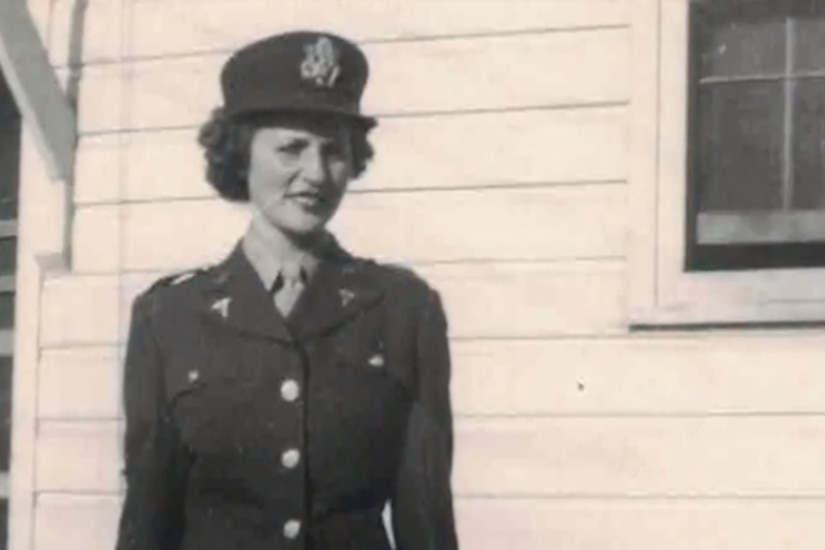
Milley then presented the Angel of Honor Award to Benson.
"I was delighted and jumping for joy when the war was over and I could go back home and get married and go to work as a nurse," Benson said after accepting the award.
"I'm proud that I was part of World War II serving our country and ensuring the freedom we have today," she said. "It saddens me to think of how many lives were lost. But I made sure my patients never died alone. I was always there with them so that I could tell their mothers that they did not die alone.
"I accept this award not for myself but on behalf of all the medical personnel who served in World War II," she said. "None of us deserved medals. We just did what millions of Americans did. We worked together, fought together and served together for our nation and for our freedom. It was a unique time of American unity and spirit that sadly may never be equaled again."
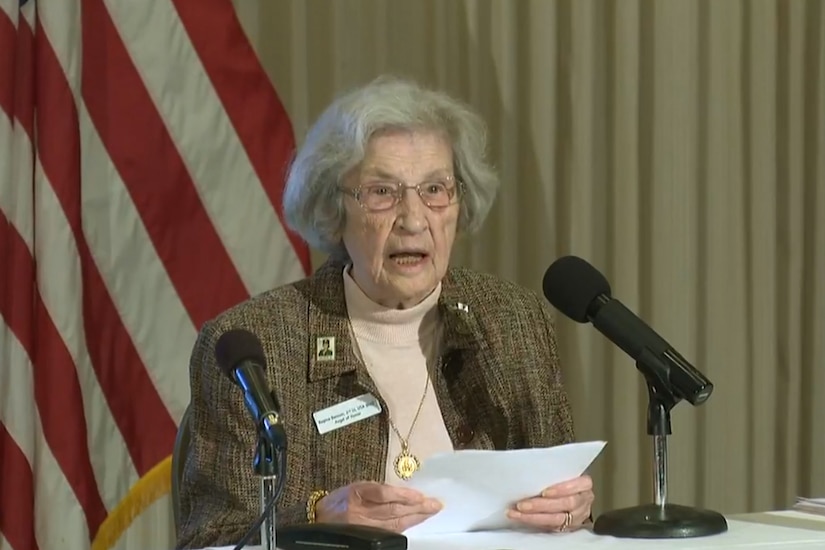
Milley also recounted the history of heroic actions by many other medical personnel on the battlefields of this nation's wars.
Retired Army Staff Sgt. Ronald J. Shurer II died a few hours before yesterday's ceremony. Milley mentioned that Shurer, a Special Forces medic, earned the Medal of Honor for his heroic actions to save the lives of at least seven soldiers, despite being wounded and under intense enemy fire, during the Battle of Shok Valley, April 6, 2008, in Afghanistan's Nuristan province.
"He's an incredible recent example of an angel of the battlefield," Milley added.
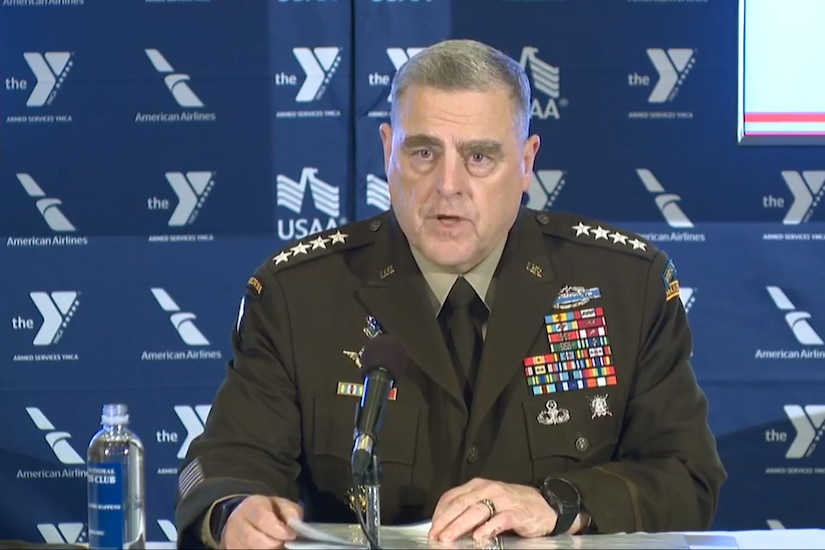
The chairman said both of his parents served during World War II; his mother in a Navy hospital in Seattle, Washington, treating the wounded coming back from the Pacific Theater. His father was a Navy corpsman with the 4th Marine Division on Kwajalein, Saipan, Tinian and Iwo Jima, "saving many lives during some of the bloodiest battles in American history."
Milley also mentioned that his wife Hollyanne has been a nurse for 35 years. "She spent countless hours comforting the wounded and has grieved with the families of our fallen. She proudly represents the faithful service and sacrifice of all of our family members who are heroes in their own right and a core strength of our military's resolve and skill."
Soldiers demonstrate a medical evacuation during a joint exercise in Zambrano, Honduras, Oct. 22, 2020.
An airman climbs down an obstacle course ladder during the 2020 Lightning Challenge at Fort Hood, Texas, Oct. 26, 2020.
Air Force Staff Sgt. Dillon Livingston, left, and Senior Airman Jade Strofaci participate in live-fire training at Yokota Air Base, Japan, Oct. 27, 2020.
Marines salute during a ceremony honoring Marine Corps hero Lt. Gen. Lewis B. “Chesty” Puller and his wife, Virginia Montague Evans, at their gravesites in Saluda, Va., Oct. 23, 2020. Marines visit the site annually to honor Puller, the most decorated Marine in history.
An Air Force F-15E Strike Eagle aircrew member reunites with loved ones at Royal Air Force Lakenheath, England, Oct. 16, 2020, upon returning from a six-month deployment supporting U.S. Air Force Central Command
Oct. 28, 2020 | BY Jim Garamone , DOD News
The U.S. and India Two-plus-Two Conference among the defense and foreign affairs leaders of both nations has charted just how far cooperation between the two democracies has come, said a senior defense official speaking on background.
The meeting — held in New Delhi — was among Defense Secretary Dr. Mark T. Esper, Secretary of States Mike Pompeo, Minister of Foreign Affairs Dr. S. Jaishankar and Indian Defense Minister Rajnath Singh.

It was the third meeting at this level between the two nations.
Prior to the meeting — held at the Hyderabad House in New Delhi — Esper and Singh sat down to substantive discussions in the Indian Ministry of Defense. Esper and Pompeo also spoke with Prime Minister Narendra Modi.
The centerpiece meeting covered a number of areas in the defense relationship. In military-to-military cooperation, the men discussed how to "operationalize" the logistics agreement. They also talked about assigning liaison officers to both countries, in areas that would deepen cooperation.
The U.S. Central Command and U.S. Indo-Pacific Command were two areas in the U.S. military discussed.
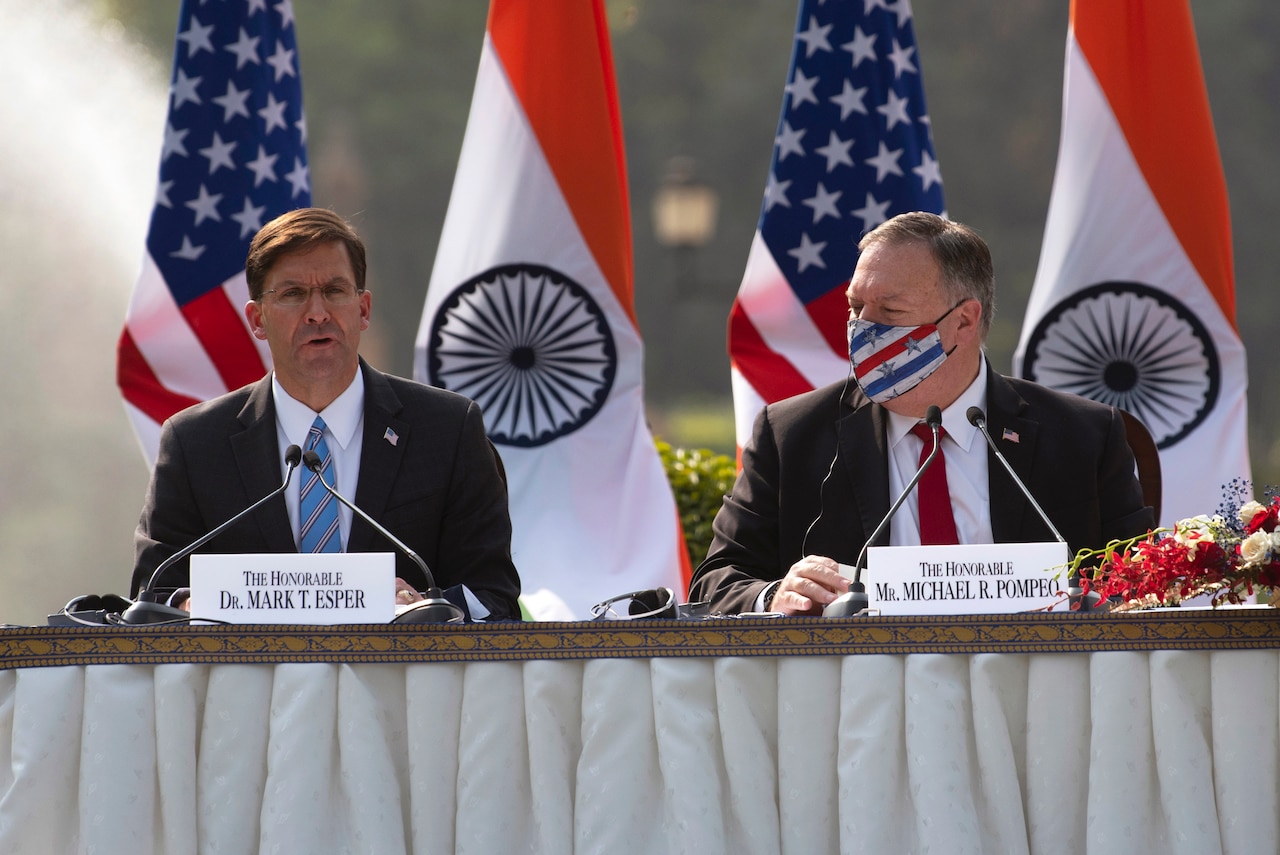
Another discussion point was information sharing and secure communications. "We spent a good bit of time talking about the Basic Exchange Cooperation Agreement, which was a key milestone today. It was signed today," the official said. "They also identified areas in 2021, where we'd like to further information sharing at the service level and at the joint level."
Secure communications was part of this discussion and both nations want to further the process and deepen the capability across services and at the leadership level.
Another part of the discussion centered on new areas of cooperation both in the region and in the new military domains of cyber and space, the official said.
The official was quick to say that although the relationship is deepening, it is not an alliance. "India has a policy of strategic autonomy, which we honor," he said. "That means they want to preserve their independence and how they manage their foreign policy."
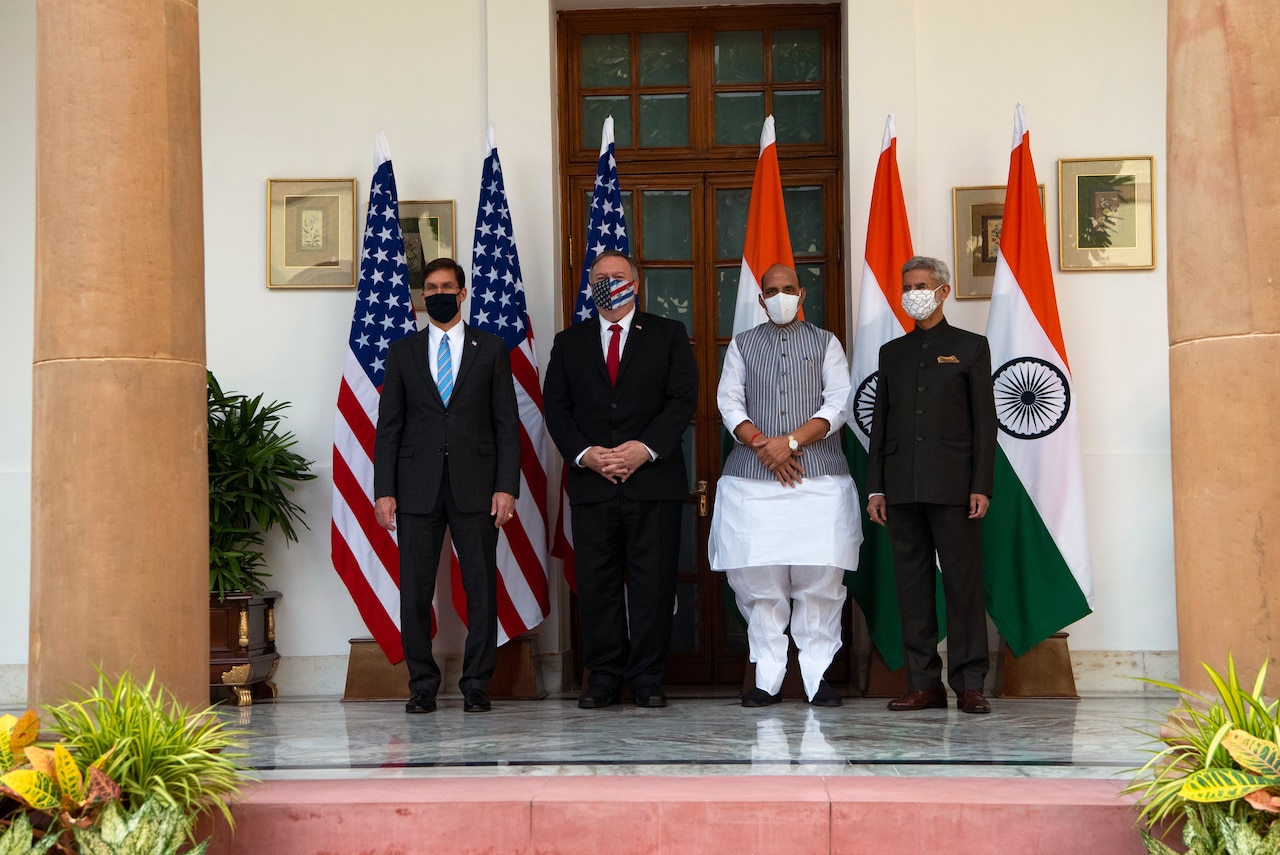
Still, India is part of a group called the Quad countries — India, Japan, Australia and the United States. There have been a number of meetings among defense officials from these nations, the most recent being in Tokyo earlier this year. "These meetings reflect a growing acknowledgment of shared interests," he said. They cover security, but they also cover economic and — in the time of COVID-19 – medical interests.
"There is no discussion of [the Quad] becoming an alliance anytime in the near future," the official said. "It is really a … mechanism to organize lines of effort across … some of the largest players in the Indo-Pacific."
The United States will host the next two-plus-two meeting.
Oct. 28, 2020 | BY Terri Moon Cronk , DOD News
Army Gen. Stephen R. Lyons spoke at the Airlift/Tanker Association's virtual seminar series today and said such a posture must give the United States positional advantage, as well as physical, psychological and temporal advantage over our adversaries through rapid response.
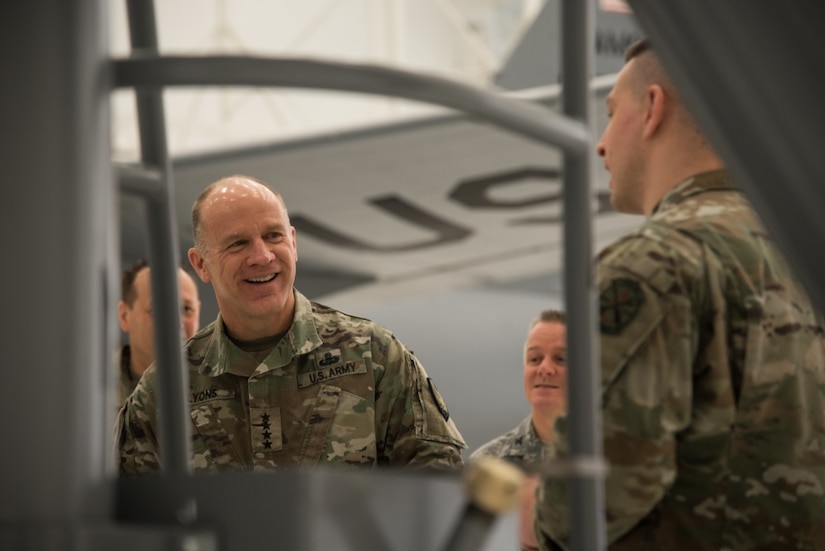
"That is the essence of Transcom and Air Mobility Command," he said. "[We've also] got to think differently about the future [and] force design that will be informed by a concept or doctrine. The force of design and force to development are future forces [that] must be smaller, lethal and all-domain capable."
The five warfighting domains comprise cyber, space, air, ground and sea.
Lyons noted the United States must move away from the paradigm of moving the entire city of St. Louis from the continental United States to a location overseas and spending the time building combat power to attack. "We must be more sophisticated in our all-domain warfare," he added.
The nation must integrate the sustainment of a joint warfighting function across all of our fighting functions, he said, all the way up to the strategic and operational level.

Following his emphasis on the structures that must change, the general turned to what he believes will not change.
"[While] the future is certainly unknown, unknowable and ever-changing, I would say Transcom's purpose will always be enduring. Our ability to project the Joint Force global distances at our time and place of choosing presents multiple options for leadership."
In addition, Lyons said, our warfighting framework remains constant.
The idea of a global posture for building capacity operates within that posture. Command and control nodes that allow us to allocate scarce resources to the highest of the defense secretary's priorities is a sound framework of which we can continue to innovate within the framework, he said.
That applies whether it is with rocket cargo or any number of initiatives in artificial intelligence or machine learning, as we continue to evolve and become better in our decision making and our ability to protect and sustain the force, Lyons added.
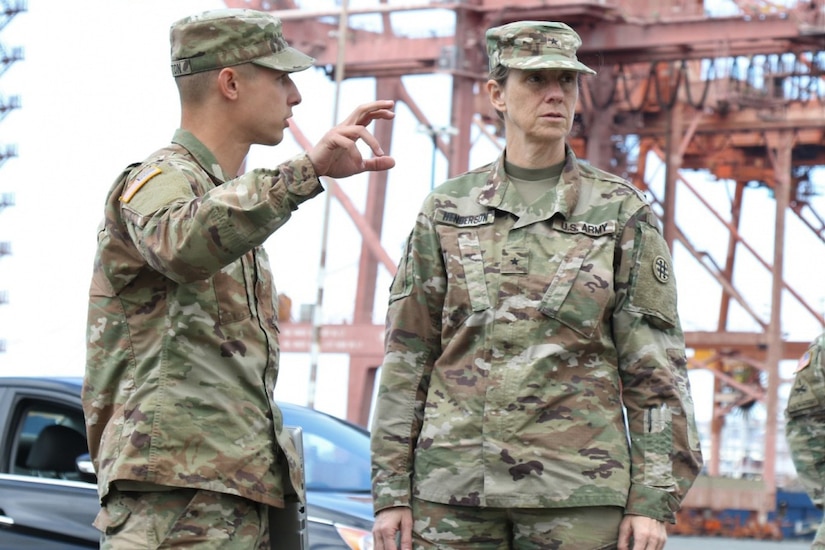
Another aspect that's not changing is people, the commander said. "People are, and have always been, our number one key competitive advantage [that] we will always need as all adaptive leaders of character, [who are] willing to step forward in a crisis and protect this great American experiment in democracy."
But every one of us who wears the military cloth has a common bond, Lyons said. "We understand teamwork, hard work and higher purpose. We understand that the characterization of success is not about us. It's not about how much we make. It's about the team. It's about serving a greater purpose."
It's really the value of our great joint force, he said, adding it's no surprise why, in poll after poll, the military profession is held in such high regard.
"We will always embrace our service values. We always demonstrate service before self and never break the trust with the American public," Lyons said.
A Marine awaits sunrise in a simulated enemy advance guard position during training at Marine Corps Air Ground Combat Center Twentynine Palms, Calif., Oct. 22, 2020.
Navy Seaman Colby Leche helps paint the Vila Nova three-room schoolhouse in Baucau, East Timor, Oct. 23, 2020.
Oct. 28, 2020 | BY Naval Medical Forces Atlantic
A team of 14 sailors from Navy Medicine Readiness and Training Unit Groton in Newport, Rhode Island, conducted a pilot program to collect COVID-19 specimen samples for 165 sailors preparing to deploy from Naval Submarine Base New London, Connecticut.
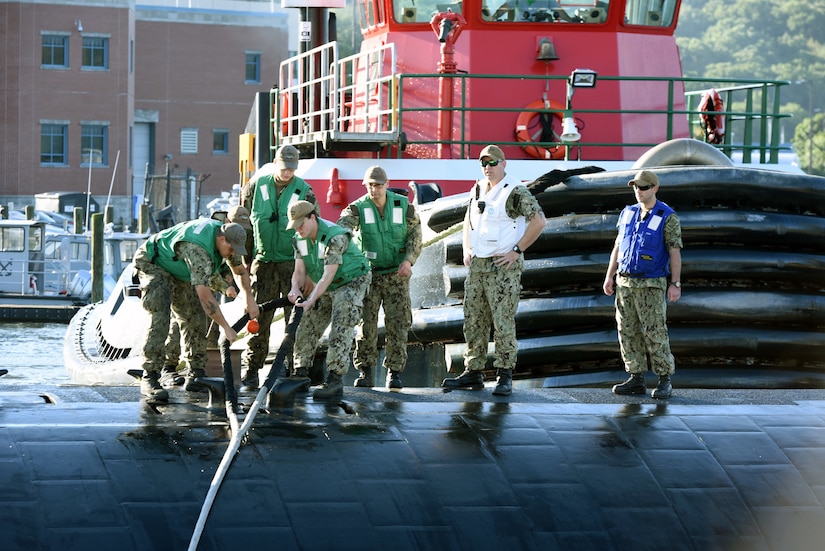
An NMRTU official said, the unique conditions on a submarine, including close quarters, limited medical resources and the absence of external aid necessitates thorough testing in advance to ensure the highest quality of force health underway. While each vessel has an independent duty corpsman to provide healthcare for its crew, an IDC does not have the resources to handle a task of this caliber alone. The infrastructure and support of NMRTU Groton, therefore, proved essential to the submarine force's operational readiness.
Corpsmen protected in full personal protective equipment met sailors lined up at the testing site entrance to conduct pre-screening. After answering a symptoms and travel questionnaire and completing temperature checks, sailors were cleared for entry and directed to their designated sampling station. Subsequent tests were conducted pier side.
The close coordination resulted in all 165 sailors being tested for COVID-19 in a timely and efficient manner, helping to ensure mission capability of the unit while minimizing safety hazards to the crew and testers, an official with the NMRTU said. Support and direct partnership with Naval Submarine Base New London were critical to ensuring all issues and logistical concerns were quickly identified and resolved. Following the testing, the corpsmen and operational leadership were able to apply lessons learned to execute a second round of tests in a third of the time with the same operational readiness outcome.
This rapid-cycle feedback and course correction is a prime example of how Navy Medicine uses high reliability concepts to enhance its performance and keep warfighters in the fight, the official NMRTU noted.
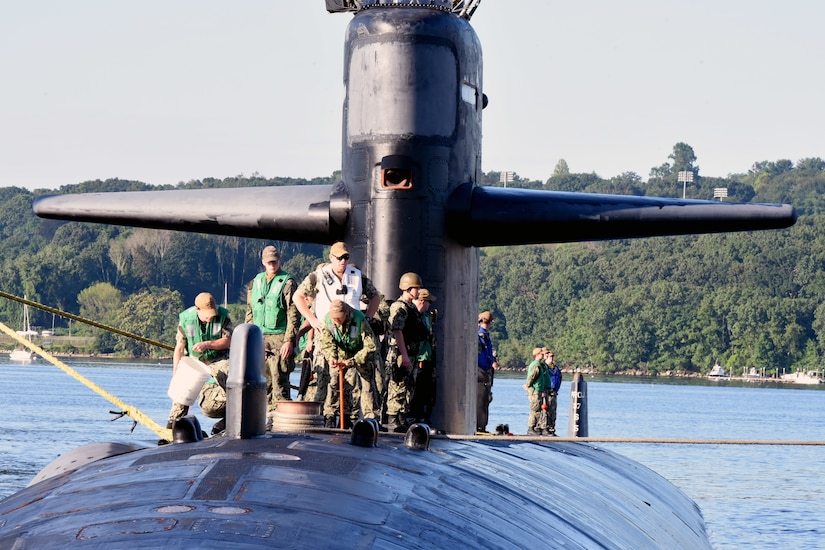
Navy Medicine Readiness and Training Command New England supports a variety of naval medical platforms in addition to providing expert medical care at Naval Health Clinic New England, which is the health care system for the Navy in the Northeast Region, providing primary and specialty care services to more than 70,000 beneficiaries.